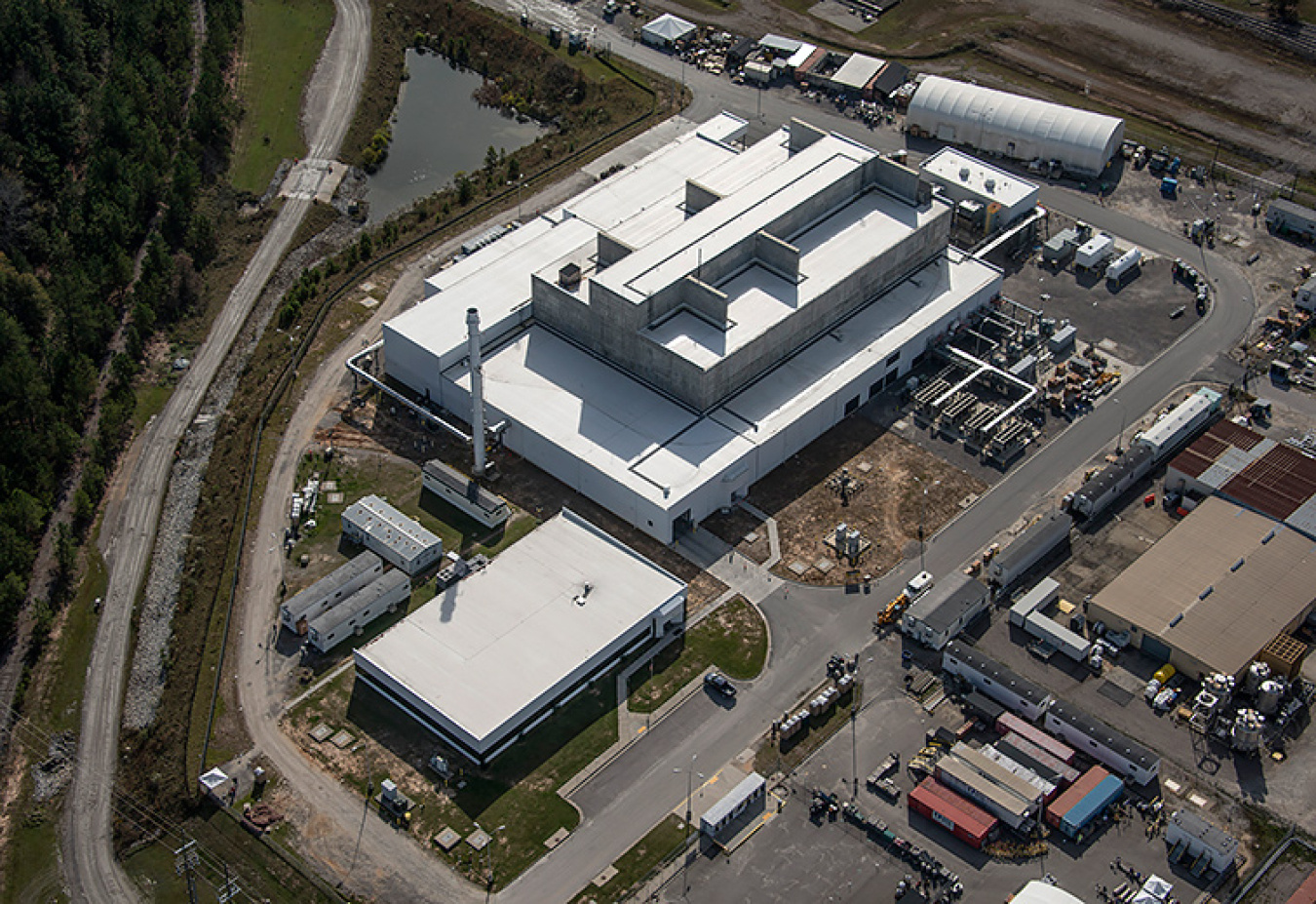AIKEN, S.C. – EM has turned to its United Kingdom counterparts for guidance to help ensure the successful startup and commissioning of the Salt Waste Processing Facility (SWPF) at the Savannah River Site (SRS) over the next two years.
February 25, 2016
An aerial view of the Salt Waste Processing Facility at the Savannah River Site.
AIKEN, S.C. – EM has turned to its United Kingdom counterparts for guidance to help ensure the successful startup and commissioning of the Salt Waste Processing Facility (SWPF) at the Savannah River Site (SRS) over the next two years.
SWPF Federal Project Director Pam Marks and others at SRS participated in two meetings with the UK Nuclear Decommissioning Authority (NDA) to learn about Evaporator D, a facility being constructed at NDA’s Sellafield site comparable to SWPF.
“The great opportunity here is that Evap D is a similar facility that has completed construction and is about 18 months ahead of SWPF on the startup and commissioning timeline,” Marks said. “With NDA’s help, we will be able to watch and learn from their project and apply any appropriate lessons learned at SWPF to ensure we get this vital facility in operation as soon as possible.”
SWPF contractor Parsons is set to finish constructing the liquid waste facility in the first half of 2016 before transitioning to testing and commissioning. Once complete, the facility will exponentially increase the rates for processing about 90 percent of the 37 million gallons of high-level, radioactive waste in the SRS underground tank farms.
EM and NDA have discussed challenges such as supply chain and vendor quality issues during construction. Evaporator D undergoes testing this year, and EM will watch for lessons learned to help with SWPF startup and commissioning.
“Working closely with DOE, our team has really put us in a position of high confidence as we finish construction and move into full commissioning mode,” said Parsons Vice President and SWPF Project Manager Frank Sheppard. “We are maintaining close connections with the UK through this process to ensure that we can learn anything and everything we can from their experience. Every day and every dollar we can save matters.”
EM provided lessons learned, too, by sharing several SWPF processes and procedures that helped ensure subcontractors were providing components at the high-quality level required for nuclear facilities.
“Startup and commissioning is really an area where we want to collaborate with the UK,” Marks said. “There is a lot of focus on SWPF as a key success for the Department of Energy in 2016 and we are doing everything we can to make sure we deliver.”
NDA Lead Programme Manager Graham Jonsson appreciated the project teams’ effort.
“It is important for all stakeholders to work collaboratively in order to improve performance; this is a great example of how this can be done and I look forward to continuing this important relationship going forward,” he said.

